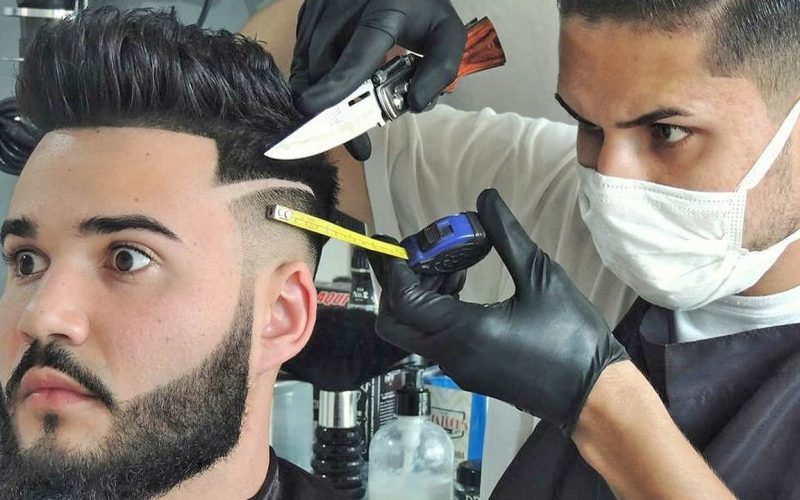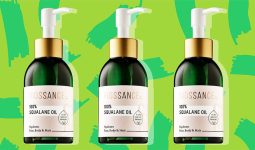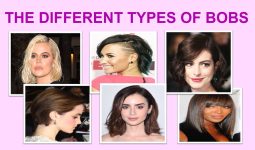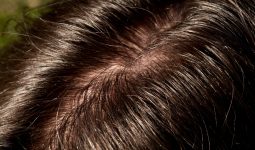With so many different types of faded haircuts, how can you know which would look best on you? There’s nothing like a fade to spruce up your appearance.
While the basic fade has a minimalist, masculine aesthetic, today’s fades are endless and reflect your personality.
There’s a reason fades are so prevalent in barbershops worldwide; why not try something new and find the perfect fade for you?
Men’s fades are by far the most popular haircut. Their adaptability is one reason they’re the top male style. There are a plethora of fades to choose from and numerous options to modify the cut!
Making a fade your own is as simple as understanding the look you’re aiming for.
From the length to the way you arrange the hair on top, it’s about knowing the appearance you’re going for.
You’ve come to the right place if you’re curious about your fading alternatives.
With so many different types of faded haircuts, how can you know which would look best on you?
We’ve compiled a breakdown of the types of fade haircuts, how each fade appears on various hair types, and how to get the most out of your next fade haircut.
From drops to bursts, there’s a style for everyone.
1. High Fade
A high fade is a modern fade that begins higher on the head, near the temples, rather than halfway above the ears.
The hair on the sides and back of the head is usually concise, sometimes even shaved down to the skin (a skin fade, which we’ll discuss later in this article).
Also, this cut is appropriately named a high fade because the fade begins “high up” on the head.
The high fade is famous for the sharp contrast between ultra-short hair high on the back and sides and longer on top. You can wear it in a variety of ways.
2. Medium Fade
Medium (or mid) fades begin lower on the head than high fades, usually around halfway between the ears.
Also, if you close your eyes and imagine a classic fade, you probably think of a medium fade.
For a flawlessly balanced look, these clean-cut classics retain the shorter portions of the hair toward the bottom. Medium fade is one of the different types of fade haircuts.
Furthermore, Mid fades can be worn with any hair type and length on top. Our favorite is a clean-cut medium fade with neat and short hair on top. Try a high fade if you’re looking for a more daring look.
3. Low Fade
Low fades feature a lower fade line around the ear level, while high fades begin about the temples, and medium fades begin midway above the ears.
Because the extended area of the hair covers more of the head than the short, faded portion, this type of fade makes the hair appear longer.
Low fades are flattering on all hair types and textures. They look fantastic when worn with longer hair on top.
4. Blown Out Low Fade
One of the reasons we like long hair on top with low fades is the variety of styling options. Also, when the hair on top is long enough, a low fade can be dressed up with a blowout like this.
Apply a small amount of mousse to damp hair, then use a round brush to blow-dry the hair backward for volume at the front.
5. Drop Fade
Drop fade might begin high, medium, or low, but they all have one thing in common: the rear of the head fade line is pulled down lower than the sides. As a result, the fade line dips, giving rise to “drop fade.”
Furthermore, you can use drop fades to provide various looks. Begin on a high, low, or anywhere in the middle. Create a rounded or pointed depth.
Style the hair on top into a quiff or mohawk for an intense look. Also, keep the hair on top short and trimmed for a low-maintenance style.
6. Skin Fade
Skin fades are sometimes known as bald fades or zero fades. Also, Skin can fade, but they always have one thing in common: the hair on the shortest fade area is shaved down to the skin.
A skin fade is a high-contrast effect that attracts attention, requires precision, and appears rugged. Be warned that skin fades will reveal vast areas of your scalp that are significantly lighter than your skin tone. After your first skin fades, you may need to use sunscreen on your head.
7. High Drop Skin Fade
The pointed drop fade line at the rear provides more styling options by keeping coily hair long on top. This is a skin fade because the hair is shaved down to the skin below the fade line.
This precise, crisp style may require more upkeep to keep it looking its best. It is also one of the different types of fades.
8. Temple Fade
Temple fades, known as temp or Brooklyn fades, are all about precision. The hair at the temples is shaved and clipped into a line-up or shape-up design with temple fades. The fading line extends behind the temples.
With temple fades, the idea is to create a precise line that integrates the gradual shortening of the fade. Temple fades can be coupled with fade – drop, skin, burst, and so on – although they’re most commonly used on high fades because other fades don’t start at the temples.
9. Burst Fade
Burst fades from a semi-circle that encircles the ear. The ear is the fade line’s focal point, which moves around it in a circle. Because the fade line appears to dip down at the rear of the head, they are comparable to drop fades.
Burst fades can be coupled with any fade to create more unique effects. Because it is tapered in length, you can choose to have the hair around the ear go down to the skin or leave a little hair for a lower-contrast impact.
10. Taper Fade
Taper fades are less noticeable than other types of fades haircuts. Your barber will retain your hair slightly longer, allowing you a more gradual transition to the shortest hair.
As a result, a taper fade has a more clean-cut, classic, and mature appearance than other fade kinds. Longer hairstyles, like an Afro, can be used with the adaptable taper fade to add more structure and better frame your face.
11. Temp Fade
There’s a reason why the temp fade is one of the most popular hairstyles for males. They’re sharp and trendy, and they work with practically any face shape and haircut.
Look no further if you want to give your haircut a modern makeover with little effort. For a fresh new perspective on a traditional style, add a temp fade to dreadlocks, waves, an Afro, or even a mohawk.
12. Short Fade
A short hair fade is excellent for people who prefer a clean, minimalist style. The short fade resembles a crew, buzz, or high-and-tight haircut. A short fade has a masculine, military feel, and it’s a fantastic choice if you want a look that doesn’t require any additional styling.
On the other hand, short fades must be maintained more frequently than extended fades to keep them clean and sharp.
13. Curly Fade Hair Cut
A curly fade haircut is a terrific choice if you’re growing out your hair. The curled top part contrasts with the faded sides, adding structure and definition.
This is one of the different types of Fades haircuts. Your barber can also modify your hairline to complement curly fade and represent your style.
A common choice is a straight line-up with curved sides, which stands out from the crowd and seamlessly combines your hairline, fade, and beard.
14. Fade Haircut with Waves
For black males, waves are an ever-popular hairdo. This adaptable appearance has a timeless quality that never goes out of style and always draws notice. Pair yours with a high fade for a unique twist on waves.
The haircut looks lively and unusual because of the contrast between the short sides and the wavy top. The result is comparable to the 180-wave haircut, which features a wavy top portion and buzzed sides.
15. Boosie Fade Haircut
The Boosie fade hairstyle, made famous by Louisiana rapper Lil Boosie, includes a square shape on a short Afro with a high skin fade. The razor-sharp geometric lines and ultra-clean fade emphasize the cut.
Depending on how your barber trims your hairline, you can customize the Boosie fade to suit most face shapes.
16. Undercut Fade Haircut
The overall impact of an undercut fade on Afro-textured hair is similar to that of the same style on Asian or Caucasian hair. The ultra-short sides of this hairstyle are contrasted with a longer top part in all forms.
A mid-fade is a terrific way to achieve the confused look of a classic undercut, while dreads, twists, or braids create a fantastic contrast to the faded sides.








